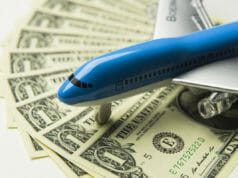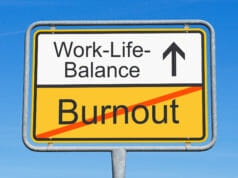One of the most daunting tasks related to choosing an airline as an employee is understanding what contract terms come with working there. In many cases, pilots look at the pay scales and come to the conclusion that everything is about the same. On the surface, that may be correct, but in reality, it is much more complex than that.
Many terms will inundate anybody who is either conversing with an airline pilot or doing research related to becoming one, and they can be easily misunderstood or simply not understood at all. One of the goals of this series of article is to begin the process of clarifying some of these terms so that prospective pilots can have a basic understanding of what their rules of compensation will be because contrary to the assertions that all regional airlines are the same, these “details” can have a profound effect on the pilot’s quality of life, compensation, and return on time invested.
One of the biggest terms that might be heard is “Trip Protection,” “Trip Pay Protection,” “Pay Protection” or just “Cancellation Pay.” Depending on the specific situation used, they can have different meanings, but they generally point to the same thing.
Essentially, “pay protection” is a simple concept. In its most basic form, it refers to what you are guaranteed to get paid for in your pilot contract. This is a fundamental reason why it is so important for a pilot to understand the pilot contracts for any regionals they may be interested in.
Let’s take a look at some hypothetical examples:
Airline A pays 100% trip protection. What this means, is that if a trip was originally valued at 20 hours of pay time, but due to weather or other circumstances, a couple of legs get canceled and the trip ends up being 12 hours. The pay protection in the pilot’s contract would still result in the pilot getting paid for all 20 hours, even though the trip was actually only 12.
Now, assume that Airline A also pays reserves for cancellations, as long as the cancellation occurs after the report time for the trip.
Airline B also pays 100% trip protection for line holders, but not reserves. So if the reserve is assigned the trip, and it cancels, then they get no hours toward their minimum monthly guarantee credit. The line holder still gets the full 20 hours of credit, but the reserve in the same position doesn’t get any.
Airline C has no cancellation pay. This essentially means that if the 20 hour trip cancels, then the pilot loses all credit toward the minimum guarantee. In this case, if the pilot didn’t break guarantee, they would still be paid guarantee.
It should be noted in all cases, that if the pilot elects to trade a trip, or drop a trip by their own choice, that the pay protections do not apply.
To clarify another often misunderstood term in the industry, a quick discussion of “minimum monthly guarantee” is in order. Most airlines pay their pilots a minimum monthly guarantee of around 70-75 hours (it will always be specified in the contract). What this means is that the pilot will never be paid for less than the minimum guarantee hours per month, even if they don’t fly that many hours. Think of it as a bank. The pilot starts the month with a bank of 75 hours pay, and a credit of zero hours of flight time. As the pilot flies through the month, they accrue credit that is applied toward the bank. In the case of the examples above, each pilot would earn 20 hours of credit toward their guarantee bank (assuming no changes to the original trip). If the pilot is able to earn more credit than 75 hours (say they fly 90 hours that month), then they get paid for the greater amount of 90 hours. If they DO NOT earn more credit than the 75 hours that month, then they get paid the minimum monthly guarantee of 75 hours. When the credit exceeds the 75 hour guarantee, it is referred to as “breaking guarantee” which means the pilot will make more than guarantee. This is usually the goal for any pilot, because it maximized income and flight time.
This becomes important with cancellation pay, because every hour of credit that isn’t protected by the contract puts the pilot further away from “breaking guarantee” if there are cancellations. This essentially makes it harder for the pilot to actually break guarantee which in turns forces them to work more trips or more hours in order to break guarantee, which drives the actual money earned for each hour of work down. It might not seem like a significant amount, but even one day’s worth of cancellations can have a very adverse effect on the pilot’s compensation for that month. For instance, if that single day was scheduled at 7 hours of paid time, then they essentially have to work an additional 7 hour scheduled time day to offset that loss (assuming no cancellation pay protection). Over the course of severe weather events, cancellations, reschedules and re-routings, this can affect a potential month’s pay by several hundred dollars or more.
While it may seem trivial or even similar, pay protection can be a significant difference in actual pay and quality of life for a pilot.





























































































































